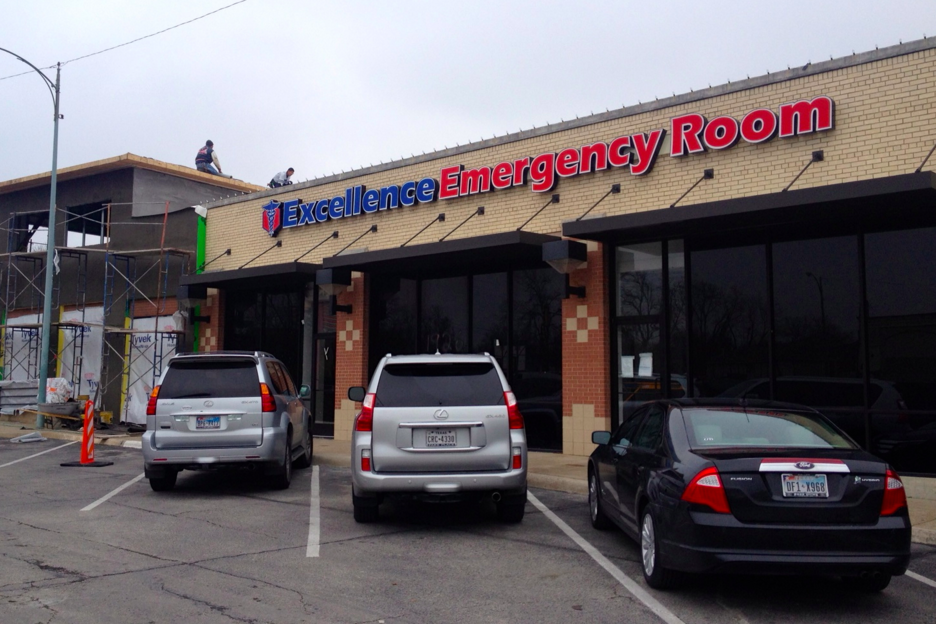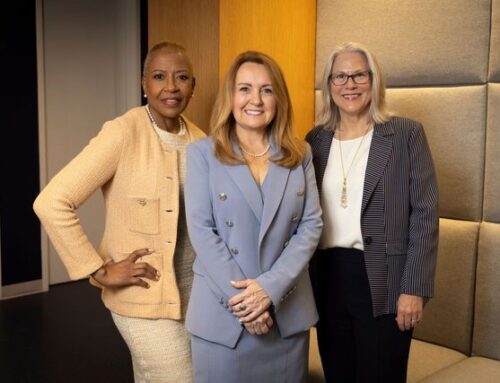At the northeast corner of Mockingbird and Skillman, the two gas stations that formerly occupied the site will soon be replaced by a free-standing emergency room. This development is in addition to the recently opened free standing emergency room at Lovers and Matilda that followed the July grand opening for the new emergency room at Oram and Skillman. And it doesn’t count the urgent care facilities Primacare at Mockingbird and Abrams, the MedSpring at Knox-Henderson and the MedPost in Casa Linda.
What’s driving this neighborhood medical construction? Are we getting more colds and coughs? More broken fingers or dislocated shoulders?
East Dallas may or may not be getting less healthy or more accident prone, but when they do need medical attention, they want it now. This phenomena seems about little else than convenience.
“We serve a neighborhood market where patients want little wait time and lots of peace and calm,” says Henry Troche-Smith, nurse manager for Excellence ER at Oram and Skillman. It’s hard, maybe impossible, for a health care consumer to determine who has the better X-ray equipment or CT scanner and “emergency” doesn’t denote time for shopping around, so why not go to the closest facility? Apparently many do. “We’ve been very pleased with our level of activity,” says Troche-Smith.
Is there customer confusion about whether to use an urgent care facility or an emergency room and the costs associated with that choice? While the potential is there, Richard Bonnin, director of communications for Emerus says, “Patients have some responsibility for researching and evaluating information about the best options for their health care. In all of our facilities, we proactively refer patients with minor complaints to nearby urgent care clinics and other options, as appropriate. Emerus also has become proactive in explaining the differences to the public by staffing booths and distributing fact sheets at numerous community events.”
Bonnin segments the market even further, using the term “micro-hospital” to describe their Baylor Emergency Medical Centers built in partnership with Baylor. Troche-Smith says Excellence ER also educates those patients who come in with bumps, bruises, coughs and colds that there may be better options for good care at a different facility with less expensive services. He notes that some patients get the explanation “but choose just to stay there and get treated.”
Who owns these facilities? It’s all over the board—the facility at Lovers and Matilda is part of the Tenet Health System, Emerus is a private company whose facilities are built in partnership with Baylor, and Excellence ER is owned by a single physician based in Houston with five other Texas locations.
The insurance issues generally track the ownership. The facilities owned by or ventured with large health systems are in-network for most insurers and take Medicare and Medicaid patients. Unaffiliated free standing ER’s generally (but not always) are out-of-network and don’t accept Medicare or Medicaid reimbursements. Yet they have to take all comers. Troche-Smith says that to be called an emergency room, a facility must be properly licensed, maintain certain services, have a board certified physician on staff at all time, be open 24/7 and “treat everybody” that walks through the door. For Troche-Smith’s Excellence ER that means walk-ins get registered and see a board certified physician for any treatment recommendations. Other services may or may not ensue but just because they are uninsured doesn’t mean they aren’t going to get a bill. A list of pricing for further services is submitted to the patient so there is no misunderstanding.
Jorge Trevino, chief operating officer at Doctor’s Hospital, doesn’t really view these free standing ER’s as competition. “They are offering a different service,” Trevino says. A free standing ER may “provide great care but has no affiliation with an acute care facility that has agreements with payers (hospital speak for insurers).” Free standing ER’s are set up for “treat and discharge” and “don’t have the next step” that an acute care hospital has.
One beneficiary of this proliferation of free standing ER’s has been retail landlords. John Zikos, partner at Venture Commercial, notes that these facilities are “market leaders in rent, don’t create any parking issues, have decent credit and are a nice clean use.” While they may not draw other shoppers to neighboring retailers, four out of five ain’t bad.
If nothing else, these businesses help the local economy. Medical –oriented businesses open 24 hours with an expanded service menu takes people to run right. Excellence ER employs 45 full-time staff and each Emerus facility employs between 50 and 60. And it’s not minimum wage work.
One question lingers. An accident happens and a friend or family calls 911 for an ambulance for you. It’s a serious issue; every second matters. Where does the ambulance take you? Do they go to the free-standing ER that’s two minutes away or drive the ten minutes to the ER’s at Baylor or Doctors or Presbyterian? We asked Norman Seals, Assistant Chief of the Dallas Fire Department in charge of Emergency Medical Services (EMS). “There is a national conversation about these free-standing ER’s as a transportation destination, “says Chief Seals, but right now they are not considered options for patient delivery. “There is no surgery suite or advanced care available at the free-standing ER’s,” adds Chief Seals. For very serious cases, the trained EMS personnel run through the protocol and determine the destination mostly based on the type of patient distress—Baylor, Parkland or Presbyterian for stroke, Parkland for burns, Parkland or Baylor for trauma, Baylor or Presbyterian for coronary.
Joelle Ybarbo, local hair stylist who lives on Oram with her husband EJ probably sums it up best. “EJ and I just had our first child,” says Joelle, “and I have great comfort knowing an emergency room is just down the block.”
Emergency and convenience don’t show up in the same sentence very often. Now they do.






